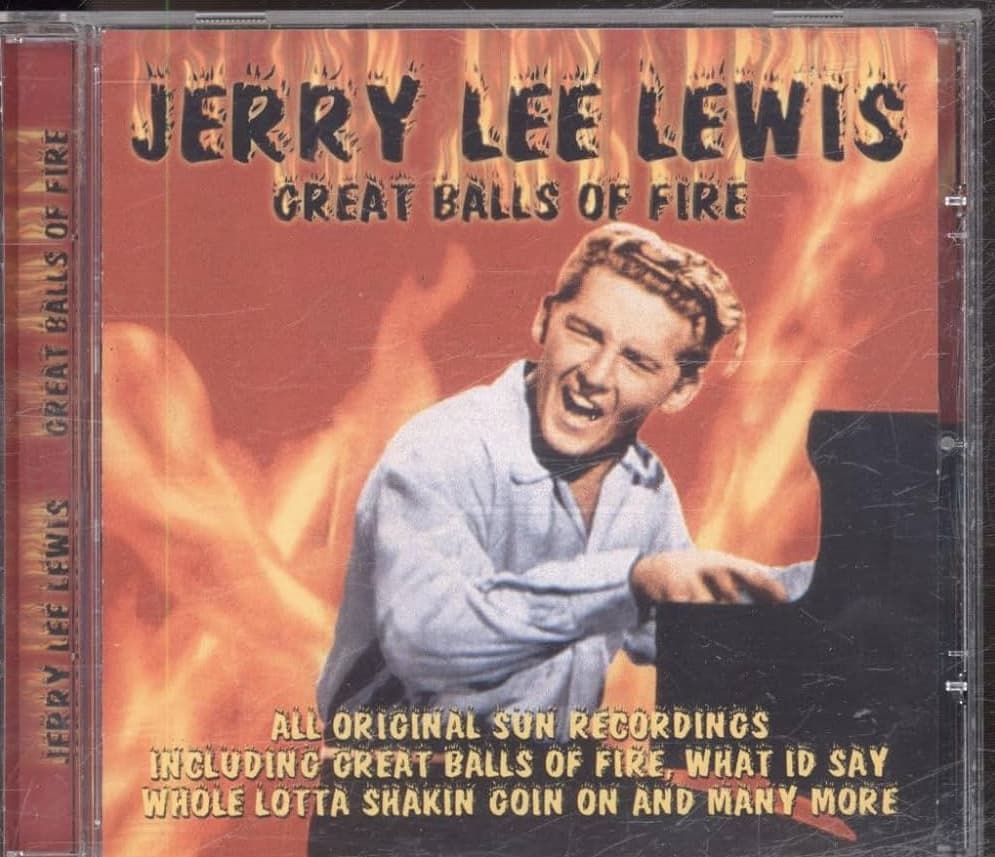
Unleashing the Fury: Jerry Lee Lewis and the Timeless Energy of “Great Balls of Fire”
When “Great Balls of Fire” thundered onto the music scene in 1957, it wasn’t just a song release—it was a cultural explosion. Jerry Lee Lewis, already known for his electrifying piano skills and unapologetic stage presence, recorded this track at the legendary Sun Studio in Memphis, Tennessee, on October 8, 1957. With its release, Lewis not only secured his place in the rock and roll pantheon but also catalyzed a shift in the music industry’s perception of what a single song could achieve.
The song, penned by Otis Blackwell and Jack Hammer, was a perfect match for Lewis’s fiery persona and pounding piano style. Its composition in the energetic AABA form complemented Lewis’s dynamic performance, making it a staple on the jukeboxes and a favorite among the youth who were just beginning to assert their cultural identities through rock and roll. The recording session itself was somewhat atypical for Lewis, featuring Sidney Stokes on bass and session drummer Larry Linn, diverging from his usual backing ensemble.
Upon its release in November 1957 under Sun Records, “Great Balls of Fire” immediately set the charts ablaze. In the United States, it soared to No. 2 on the Billboard pop charts and claimed the top spot on the country charts, a testament to its broad appeal across different audience segments. The song’s impact wasn’t confined to the U.S. alone; it also hit No. 1 on the UK Singles Chart and charted impressively in New Zealand and the Netherlands. Such was its appeal that it sold one million copies in just the first 10 days of its release in the U.S., marking it as one of the best-selling singles of that era.
The track’s placement in the 1957 Warner Brothers film “Jamboree” further amplified its reach. This appearance alongside stars like Carl Perkins and Fats Domino not only showcased Lewis’s charismatic performance but also cemented the song’s place in rock and roll history. Additionally, the song was featured prominently on the B-side of Lewis’s 1964 album, Live at the Star Club, Hamburg, capturing the raw, live energy of his performances.
“Great Balls of Fire” is more than just a song; it’s a cultural artifact that encapsulates the energy and rebellious spirit of the late 1950s. Its legacy is firmly entrenched, having been ranked as the 96th greatest song ever by Rolling Stone. This ranking reflects not only the song’s immediate impact but also its enduring appeal, resonating through generations and continually reminding us of the moment when Jerry Lee Lewis, with a flash of his piano keys, forever changed the landscape of rock and roll.